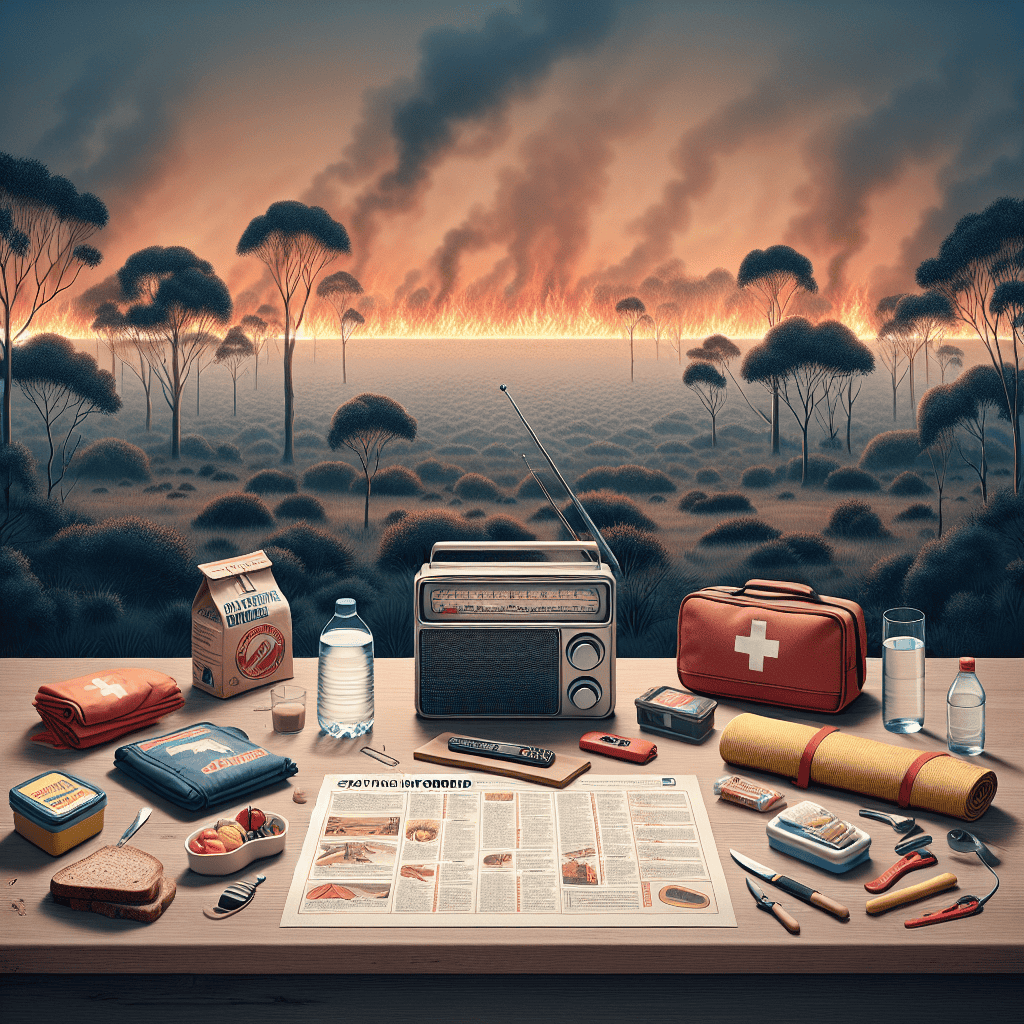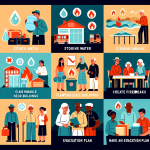When the bushfire season approaches, it’s crucial to be proactive and informed to ensure the safety of your family, home, and community. Bushfires can spread rapidly and unpredictably, leaving little time to react. By taking the correct steps ahead of time, you can mitigate risks and prepare for the possibility of an emergency. In this guide, we’ll provide key bushfire survival tips to help you remain safe and prepared.
Understand the Bushfire Risk in Your Area
Australia’s diverse landscapes mean bushfires can occur almost anywhere during dry, hot periods, but the risk is higher in some areas than others.
1. Know Your Risk Level
Start by checking if your area is prone to bushfires. Local councils and bushfire maps are excellent resources to assess your region’s level of risk. If you live near bushlands, grasslands, or rural areas, it’s especially critical to prepare.
2. Stay Updated on Fire Warnings
Bushfire risk can dramatically escalate during high-risk weather conditions. Pay attention to local authorities, meteorological forecasts, and websites like ABC Emergency that offer live updates. These resources provide vital information, including fire danger ratings and emergency announcements.
Prepare a Bushfire Survival Plan
Preparation is the cornerstone of bushfire safety. A well-thought-out survival plan can save lives and protect your property during an emergency.
1. Create a Written Plan
Ensure you have a detailed bushfire survival plan that clearly outlines what every family member should do in case of an emergency. Include the following in your plan:
- Evacuation routes: Identify multiple routes in case one becomes inaccessible.
- Emergency contacts: Save numbers for family, neighbors, and local authorities.
- Assembly points: Decide on a safe place to meet if you must evacuate.
- Triggers for action: Define clear events or warnings that prompt you to leave or take other safety measures.
2. Communicate Your Plan
Discuss the survival plan with everyone in your household so all members are aware of their roles. Hold regular practice drills to ensure readiness.
Prepare Your Home and Surroundings
Your property can be a significant line of defense during a bushfire. Mitigating fire risk begins with preparing your home and creating a defensible space.
1. Clear Vegetation and Debris
Bushfires thrive on fuel, so it’s critical to reduce combustible material around your property. Some steps include:
- Trimming trees: Cut back overhanging branches and shrubs close to your home.
- Clearing gutters: Remove any dry leaves and debris from your roof and gutters.
- Mulching safely: Avoid flammable mulch, particularly near your house.
2. Use Fire-Resistant Building Materials
If you’re building or renovating, opt for fire-resistant materials such as metal frames, steel roofing, and non-combustible fences. These can make a significant difference in protecting your home during a fire.
3. Have Equipment Ready
Ensure you have essential tools and equipment on hand, such as:
- Long hoses that can reach every part of your property
- Sturdy rakes and shovels
- Protective gear like goggles, gloves, and face masks
- Fire extinguishers and water sources (e.g., tanks or pumps)
Assemble an Emergency Kit
An emergency survival kit ensures you have everything necessary to evacuate quickly or shelter in place. Key items to include are:
- Important documents: Birth certificates, insurance papers, wills, and passports.
- Medications and first aid supplies: Include prescription medications, bandages, and antiseptics.
- Food and water: Pack non-perishable food items and at least three liters of drinking water per person per day.
- Clothing and essentials: Include sturdy shoes, protective clothing, and personal hygiene items.
- Communication tools: A portable radio, charged phone, and external battery packs.
- Flashlights: Pack battery-powered or hand-crank flashlights with extra batteries.
Ensure your emergency kit is compact, easy to carry, and stored in an accessible location.
Know What to Do During a Bushfire
Even with the best preparation, a bushfire may still occur. Knowing how to respond when under threat can make all the difference.
1. Leave Early
Evacuation is always the safest option during a bushfire. If authorities issue warnings to evacuate, don’t hesitate. Leaving early maximizes safety and avoids putting emergency crews at risk to rescue stranded individuals.
2. Stay Informed
Monitor emergency broadcasts, websites, or smartphone apps for real-time updates. Platforms like the ABC Emergency website provide credible and timely information to help you make informed decisions.
3. Know Shelter Options
If evacuation isn’t feasible, identify safe shelters near your area. These could be local community centers, bushfire safer places, or even in-home options like remaining inside a fire-resistant room.
4. Protect Yourself During the Fire
If caught unexpectedly in a bushfire, take these essential steps:
- Wear protective clothing, covering all exposed skin.
- Drink plenty of water to stay hydrated amidst the heat.
- Stay indoors, away from windows, until the fire front passes.
After the Bushfire: Assessing Safety
Once the immediate threat has passed, it’s still important to exercise caution. Hazards such as hotspots, fallen debris, and damaged infrastructure might pose risks.
Inspect Your Property
Return to your home only after authorities declare it safe. While assessing, check for:
- Structural damage.
- Burning embers near your home or garden.
- Hazards like fallen powerlines.
Seek Support
Recovering from a bushfire can be challenging emotionally, physically, and financially. Don’t hesitate to reach out to local support services, charities, or counselors for assistance.
Final Thoughts
Bushfires are an unavoidable part of Australian life in many regions, but preparation and vigilance can drastically improve your odds of staying safe. By staying informed about local risks and warnings, creating a survival plan, and taking preventative measures, you can protect yourself, your loved ones, and your property. Be proactive, resilient, and ready—because being prepared is the best defense against life-threatening emergencies.

